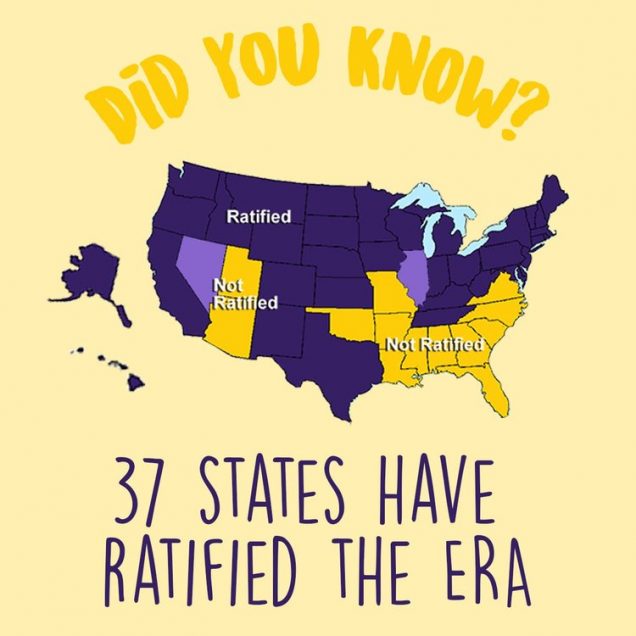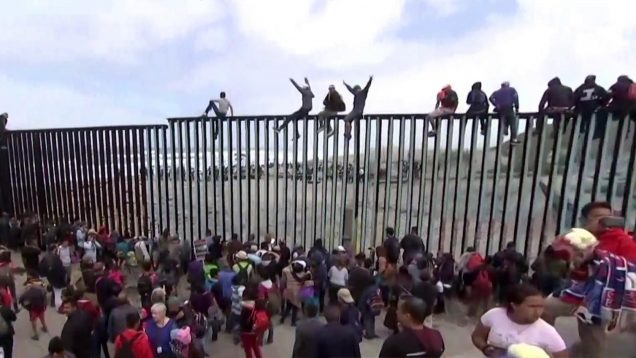Raising the Blinds – Gaining Meaningful Insight into Pharmaceutical Pricing through Legislation
Rising healthcare costs are a growing concern across the United States; in 2016 U.S. health care spending was $10,348 per person – or 17.9 % of the nation’s Gross Domestic Product (GDP). To counter this alarming rise in healthcare costs, states are addressing one of the largest factors in rising healthcare costs – high drug prices.
Many factors contribute to the high price of healthcare in our country, some of which are natural to an aging populace due to the baby boom of the 1950’s as the proportion of the population that is 65 and over is projected to experience a large increase in the coming years. An increase in costs is natural with a larger number of consumers – addressing this change is an important, but avoidable, challenge to overcome.
One avoidable factor of increasing healthcare costs is rapidly increasing pharmaceutical prices. Variance in drug prices may be geographic; based on where the drug is sold , or whom the drug is being sold to (pharmacy v. government). Many factors contribute to price differences, but an important factor are Pharmacy Benefit Managers (PBMs) as an intermediate in the market. States have been working to roll back the PBM layer of the market for the pharmaceutical industry.
Pharmaceutical pricing has long been the target of legislators, but with a lot of talk and a surprising lack of action. Drug pricing is discussed in both major party’s campaign platforms of the major parties and has been featured prominently in speeches by President Trump, and has featured in initiatives by previous administrations. There has been an uptick of legislation passed in the past decade, at all levels of government, with state action against pharmacy benefit managers and President Trump’s signing the Know the Lowest Price Act and the Patient Right to Know Drug Prices Act. A common thread in the legislation is increased transparency because a big factor in the high drug prices — and medical care generally—is the lack of information for consumers and purchasers. Since 2015, California, Oregon, Louisiana, Nevada, Vermont, Connecticut, and Maryland imposed reporting requirements on pharmaceutical manufacturers who increase prices over an established threshold in a set time period. For example, California requires reporting when a drug that costs more than $40 and its wholesale acquisition cost (WAC) increases by more than 16% over two calendar years. The WAC is similar to a “list” price for pharmaceuticals to wholesalers and direct purchasers. The WAC, however, does not include discounts or rebates offered by pharmacy benefit managers.
The new transparency offers insight to price increases; if there are no legitimate reason for the increase other than higher profits due to market control, state officials, drug customers and the public can take action.
The states with transparency statutes have imposed different methodologies with manufacturers reporting to different government officials such as the Department of Health and Human Services, creation of new departments, or to the state’s Attorney General.
Oregon currently requires the most detailed reporting; manufacturers must report to the Department of Consumer and Business Services the following:
- Name, price of drug and net increase in price (in %) over previous calendar year
- Length of time on market
- Factors contributing to price increase
- Name(s) of any generic version(s) of the drug
- Research & Develop Costs from Public Funds
- Direct costs to Manufacturer
- Total sales revenue for drug over prev. calendar year
- Profit from drug over previous calendar year
- Drug’s price at release and yearly increases over the past 5 years
- 10 highest prices paid for the drug during past year outside of the US
- Any other info relevant to price increase
- Supporting documentation
In contrast, California’s requirements provide for advance notice of price increases and unearthing the reasoning for the increase. The California law requires manufacturers to report (A) Date of increase, current WAC, and future increase in WAC (in dollar amounts); and (B) The change or improvement, if any, that necessitates the price increase. Purchasers then have notice of any forthcoming price changes and if the increase is warranted. California also requires a report for new drugs if its price exceed $670—the 2017 Medicare Part D threshold. California’s reporting scheme has been a model for other states.
Maryland’s approach was more severe, with a provision banning “price gouging” of generic drugs. An “unconscionable price increase” of any “essential off-patent or generic drug” is illegal and Maryland can levy a fine and take action to reverse the price change. The state did not include any limitation of the law to drugs that have come into or passed through Maryland.
The generic drug lobby, the Association for Accessible Medicines, challenged the law and the Fourth Circuit Court of Appeals struck down the law as an unconstitutional regulation of interstate commerce. Maryland has petitioned the Supreme Court to revisit the case.
 The Pharmaceutical Research and Manufacturers (PhRMA), one of the largest pharmaceutical lobbying groups, has sued California alleging the law, like Maryland’s, is unconstitutional. Because California’s law is informational—and does not allow forced price changes—it is likely constitutional. In fact, PhRMA’s initial complaint was dismissed, and subsequently filed an amended complaint on Sept. 18, 2018.
The Pharmaceutical Research and Manufacturers (PhRMA), one of the largest pharmaceutical lobbying groups, has sued California alleging the law, like Maryland’s, is unconstitutional. Because California’s law is informational—and does not allow forced price changes—it is likely constitutional. In fact, PhRMA’s initial complaint was dismissed, and subsequently filed an amended complaint on Sept. 18, 2018.
It will be imperative for states seeking to regulate pharmaceutical manufacturers to observe where courts determine the extent of reporting they may require when they go after a manufacturer for increasing the price of their drug. For the time being, it appears that information-gathering may be the easiest available avenue for states seeking to curtail increases in drug prices. Seeking justifications and reasoning for large increases in drug prices may create a barrier for pharmacuetical companies seeking to impose unsubstantiated increases in drugs. Going further towards affirmative control of pricing appears to be off limits to states going as far as Maryland, but more careful structuring of the controls to the specific state may be permissible.
 Drew Kohlmeier is a student in the Boston University School of Law Class of 2020 and is a native of Manhattan, KS, graduating with a degree in Biology from Kansas State University in 2016. Drew decided on Boston for law school due to his interest in health care and life sciences, and will be practicing in the emerging companies space focused on the life sciences industry following his graduation from BU.
Drew Kohlmeier is a student in the Boston University School of Law Class of 2020 and is a native of Manhattan, KS, graduating with a degree in Biology from Kansas State University in 2016. Drew decided on Boston for law school due to his interest in health care and life sciences, and will be practicing in the emerging companies space focused on the life sciences industry following his graduation from BU.
Automatic Vote Registration is a Necessary Step in the Right Direction to Increase Voter Turnout
In 2016, Donald Trump won the electoral vote, and therefore the presidency, because of fewer than 80,000 people spread over 3 states; about the same population as Scranton, Pennsylvania. While there are many ways to analyze this narrow margin, the most important may be that elections can be decided by a small number of votes. This fact makes it increasingly important that governments ensure every eligible citizen has the ability to conveniently vote. When 80,000 people can decide a national election, any obstacle that inhibits citizens from voting can drastically change who our representatives are. One recent effort in several states is automatic voter registration. While not the solution to all voting problems, it is a worthwhile first step towards greater voter turnout.
In 2015, Oregon became the first state to adopt automatic voter registration.Since then, 12 more states and the District of Columbia have enacted similar legislation. Most recently, in August of 2018, Massachusetts Governor Charlie Baker signed an automatic registration bill into law. Automatic voter registration laws change the traditional opt-in registration methods into opt-out plans. The Massachusetts law, for instance, requires automatic registration for anyone who completes a transaction with the Department of Motor Vehicles (DMV) or signs up for state healthcare (MassHealth), unless they opt-out of registration . The law will take full effect in January 2020, in time for the next presidential election.
Because automatic voter registration is a relatively new design model, the research into whether or not it actually increases voter turnout is limited. However, the initial research from the Center for American Politics (CAP) seems positive. According to early numbers, of the 272,000 people in Oregon who were registered through the automatic system, more than 1/3 of them (approximately 98,000 people)voted in the 2016 election . This same data also suggests that Oregon's automatic registration law has created a potential pool of voters who are more representative of the age, income, and ethnicity of the state’s residents. At the very least, there is clear and conclusive evidence to confirm that automatic voter registration will definitely increase the number of people who have the option of voting in the next election. Since 2016, Oregon’s registration rates have quadrupled at state DMV offices. There have been similar results in Vermont where, after only six months of its new system, registration rates rose 62% from the previous year . While the effect remains to be seen in Massachusetts, officials estimate that approximately 680,000 new voters will be registered because of the bill.
Despite these promising results, automatic voter registration has not been without its critics. Opponents are concerned about various issues such as fraud, duplicate registrations, and accidental enfranchisement for undocumented immigrants. Proponents believe that these concerns, however, are largely unfounded. To combat the risk of fraud and duplicate registrations, many states conduct their automatic registration through multiple governmental agencies that can all supply and confirm correct identifying information (such as changed addresses or last names). The Massachusetts law allows registration through two different agencies and also requires the state to link with the Electronic Registration Information Center (ERIC); a third-party nonprofit that will update and report changed voter information to the state. Concerns of accidental registration of undocumented immigrants are most heightened in places such as California, which allows undocumented residents to obtain drivers licenses while also providing automatic registration through the DMV. Election officials in California, however, state that all automatic registrations in California are cross referenced with voter eligibility databases the ensure that this fear cannot come to fruition.
Proponents of automatic voter registration argue that while the potential negative side effects of these laws are negligible, the benefits are huge. Automatic registration is a small, but highly effective, tool to help protect the most vulnerable from having their voting rights infringed upon. One important example of this can be found in the state of Georgia. Georgia has had automatic voter registration through the Department of Driver Services (DDS) since September of 2016. Prior to adopting automatic registration, the state required voter applications to meet extremely strict “precise match” requirements. Under these precise match requirements, applications ccould be held or rejected if they did not precisely match the information the state already had on file for that person. Applications were held up for trivial issues such as missing hyphens or a signature that looked slightly different. In 2016, The Secretary of state ended these precise match requirements just as the state began implementing automatic voter registration.
During the 2018 midterm election Secretary of State Brian Kemp reinstated the practice of requiring precise match’s for voter registration and absentee ballots. This requirement caused widespread rejection of absentee ballots and mailed in voter registration applications-- more than 53,000 ballots and applications because of precise match reasons. While 32% of residents in Georgia are black, approximately 70% of the rejected applications were from black residents. This seemingly suggests that one of the greatest issues with automatic voter registration is simply that it doesn’t do enough on its own to prevent voter suppression.
While automatic registration can effect great change in terms of the number of people who are registered to vote, it is only a beginning, and not an end, to improve the problem of voter suppression and voter turnout. The decision whether or not to vote is almost as personal as the decision of who to vote for. All citizens should have the right to choose whether they want to vote in any particular election. When state laws and policies make it difficult for people to register, the government ends up taking the decision out of the hands of too many Americans. The move towards easier registration is an important one. For a country whose elections are decided by so few votes, it’s imperative that anyone who wants to vote, gets to.
 Ashley Zink anticipates graduating from Boston University School of Law with a Juris Doctor in May 2020.
Ashley Zink anticipates graduating from Boston University School of Law with a Juris Doctor in May 2020.
Of Migration and Refugees: The Failure of Republican Deterrence Policy
Despite two years of the Trump administration’s get-tough-on-refugees policy, the latest statistics continue to show record numbers of migrants crossing the U.S. border, with “16,658 family members in September, the highest one-month total on record and an 80 percent increase from July.” This is just the latest in the periodic reports showing that Trump’s immigration policy has failed, which should prompt questions both about why it has failed, as well as why Trump continues to insist on such a patently immoral approach to policy. Since at least 2014, Republicans have pushed for draconian treatment of border-crossers on the theory that such treatment will deter people from entering the United States. However, deterennce ignores the reasons why people are fleeing their home countries, and thus predictably fails, suggesting that the G.O.P. has adopted the policy in order to appeal to a segment of the voting public whose fear and hate have been amplified by right-wing propaganda.
Shortly after taking office, Trump quickly began to make good on his campaign promises to get tough on immigration, reversing what he termed Democrats’ soft approach. These policies included the end of Obama’s Deferred Action for Childhood Arrivals program, the end of Temporary Protected Status for hundreds of thousands of people, and the implementation of harsh treatment of immigration detainees at the border, including family separation, prolonged detention of asylum-seekers, the use of prisons as “detention” facilities, and a concentration of resources to increase prosecute border-crossers (and significant evidence of over-enforcement). The goal of such policies is apparently rooted in a belief that such policies will deter migrants from attempting to enter the United States, notwithstanding the lack of evidence that such deterrence is effective.
These policies should be seen as derivative of the rhetoric of Republican critics of President Obama’s initial response to the so-called “surge” of children crossing the border in 2014. In early June, Obama originally declared the situation a “humanitarian crisis” and directed officials to apprehend and provide care, including housing and medical treatment, and legal aid. However, with right-wing propaganda outlets such as The Daily Caller whipping up fear of the children at the border, Republican politicians seized on the opportunity to make the humanitarian crisis into a political one. Claiming the crisis was due a failure of the Obama administration, politicians such as House Judiciary Chair Robert Goodlatte suggested that the solution was simply an end to “Obama’s lax immigration enforcement policies” and rigorous enforcement of the immigration laws. And, by the end of June, the Obama administration, feeling the pressure from the right, shifted gears and adopted a policy of deterrence. This crackdown included increased enforcement and wide-spread use of detention centers, as well as an information campaign “to send a clear message to potential migrants so that they understand the significant dangers of this journey and what they will experience in the United States.” This created little political traction for Democrats, as Republicans insisted that it was too little, too late, and that draconian deterrence measures were necessary.
The reality is that migration to the United States from Central America is largely driven by push factors forcing people out of their home countries, not pull factors luring them to the United States, which explains the lack of evidence for the efficacy of deterrence. As a worker at a migrant shelter in Tucson, Arizona is reported as explaining, “Why would you undertake such a dangerous journey? When you’ve got a gun to your head, people threatening to rape your daughter, extort your business, force your son to work for the cartels. What would you do?” While Trump insists on depicting migrants from Central America as gang-members, or even soldiers “sent” by their home countries in a mythical war on American interests, it is probably best to think of human beings fleeing their nations because of violence as asylum-seekers.
The Refugee Act of 1980 defines refugees and asylum-seekers to be those who are persecuted, or have “a well-founded fear of persecution[,] on account of race, religion, nationality, membership in a particular social group, or political opinion.” The law also provides a right to any alien within the United States to seek asylum, requiring those seeking such status to cross the border. Trump appears to see asylum, one of the basic pillars of human rights law, as a loophole to be exploited by evildoers, and is seeking to close that “loophole,” if not through legislation, then through deterring those seeking safe-harbor. Trump’s Justice Department, has moved to exclude domestic violence and gang targeting as bases for establishing persecution based on membership in a particular social group, overturning Board of Immigration Appeals precedent. On a moral level, there seems little reason to distinguish between the persecution faced by political dissidents in totalitarian regimes, and that faced by victims of the reign of terror perpetrated by gangs in Central America. Certainly, the pervasive fear of violence under both regimes is what drives people to seek safety in other countries. It is this push-factor, the pervasive violence faced by many Central Americans in their home nations, that is driving migration to the United States, and no amount of deterrence, short of recreating the violence of their home nations at the American border, will change the minds of those who feel forced to flee for their lives.
That said, as Trump is able to feed on fear and hate in order to build political power with his Republican base, it is unlikely that evidence-based policy arguments about the efficacy of deterrence policy will make much headway towards a reconsideration of said policy. Perhaps a congressional re-imagination made possible by the new Democratic House majority will lead to legislative changes prompting a humane response to what is at base a humanitarian crisis. The House leadership’s recent refusal to appropriate money for what many consider a boondoggle border wall suggests that Democrats are eager to pass sensible border policy rather than acquiesce to Trump’s grandstanding. Congressional mandates that the executive branch again consider domestic violence and gang intimidation as possible bases in the determination of asylum would be a start. Shifting resources from detention centers to asylum officers and immigration judges, thereby treating asylum-seekers as asylees and not felons would help as well. And, in the long-run, Congress should consider how best to address the push factors causing people to flee for their lives in the first place.
 Dan Ordorica anticipates earning his Juris Doctor from Boston University School of Law in May 2019.
Dan Ordorica anticipates earning his Juris Doctor from Boston University School of Law in May 2019.
Can Single-Payer Really Happen?
Healthcare is on the frontlines of legislative debates— the U.S. has the most expensive care and reports the poorest outcomes of all rich democracies (RDs). Several states have proposed legislation to innovate healthcare access and to safeguard against the destruction of the ACA. One “old idea” that recently gained momentum is single-payer, and for New York (NY), it may become a reality, with its fate resting with the new legislature. To date, only one state has briefly “experimented” with single-payer – Vermont, and it failed due to gross underestimation of its costs. In NY, a landmark study that evaluates the viability of NY’s single-payer bill, known as the New York Health Act (NYHA), conducted by RAND, detailed benefits and setbacks of the proposed legislation, and public reaction was mixed. Despite the not so encouraging findings, lessons can still be learned from this report.
Single-payer, coined as “Medicare for all”, is a health insurance system in which a single public agency organizes healthcare financing, ideally covering all types of essential healthcare services. Delivery of care itself, however, would remain largely private in a single-payer system.
Proposals for single-payer in the U.S. are not new. The earliest version came in 1943 by Senators Robert Wagner (D-New York), James Murray (D-Montana), and Representative John Dingell, Sr. (D-Michigan), known as the Wagner-Murray-Dingell Bill (and subsequently endorsed by President Truman in 1945). The post-World War II bill proposed funding health care through payroll and income taxes. The bill became entangled with the Cold War , was vilified as “socialized medicine” by its opponents, and was discarded. The idea was revived in the 1950s, when it was nearly impossible for an aging population to get private health insurance. The elderly advocated for subsidized coverage since they are no longer able to afford their care, and hospitals advocated for it to ensure that the healthcare services they provide were paid for. The result: Medicare was enacted in 1965— the first form of single-payer insurance in the U.S.
 Single-payer is gaining popularity once again. According to a Reuters poll, 70% of Americans support some form of single-payer coverage. Why? First, with the implementation of the ACA, there was a national momentum for states to expand their healthcare coverage. The health exchange created by the ACA made coverage accessible for many middle-income families and individuals. On the Medicaid side, progressive states elected to expand their eligibility coverage for individuals earning up to 138% of the federal poverty level in exchange for a 50% match in federal subsidies, a benefit many states enjoy. The most appealing provision of all is the mandated coverage of pre-existing conditions. With the all Republican take-over of the federal government in 2016, many Americans worried about what would happen to their coverage. Over the next two years, the ACA underwent congressional budget cuts, but despite efforts by Congress and President Trump, the ACA has grown in popularity with the general public.
Single-payer is gaining popularity once again. According to a Reuters poll, 70% of Americans support some form of single-payer coverage. Why? First, with the implementation of the ACA, there was a national momentum for states to expand their healthcare coverage. The health exchange created by the ACA made coverage accessible for many middle-income families and individuals. On the Medicaid side, progressive states elected to expand their eligibility coverage for individuals earning up to 138% of the federal poverty level in exchange for a 50% match in federal subsidies, a benefit many states enjoy. The most appealing provision of all is the mandated coverage of pre-existing conditions. With the all Republican take-over of the federal government in 2016, many Americans worried about what would happen to their coverage. Over the next two years, the ACA underwent congressional budget cuts, but despite efforts by Congress and President Trump, the ACA has grown in popularity with the general public.
In NY, the concept of single-payer was first introduced in 1992 by Assembly member Richard Gottfried (NY-D). The goal of NYHA is to provide universal insurance coverage with no cost-sharing for New Yorkers, regardless of legal status, and would cover almost all comprehensive services. Bill proponents expect increased access to care and reduced costs by removing high administrative overhead costs and reducing unjustifiably high prescription drug costs. Much like the Wagner-Murray-Dingell Bill, NYHA would be funded through payroll and income taxes. Since 2015, the NYHA has passed the Assembly floor four times. Although 31 state senators co-signed the bill, it has been stopped in the Senate by just one vote. This may now change with the Democrats taking back the Senate majority, although the cost may be a deterrent.
Despite the national and legislative enthusiasm, New Yorkers have been skeptical of single-payer reform. According to a 2018 Mercury Public Affairs poll, only 33% support the bill. Over 60%, however, said they would support increased subsidies to assist low and middle-income families. Why the opposition? The number one reason of 66% polled: taxes would pose a high burden.
The RAND study assessed “near-term” and “long-term” impacts of the bill. Overall, it found that single-payer would be viable, but with big caveats. The system would expand health care access, all while generating an estimated $15 billion in net savings (3.1%) on healthcare costs by 2031. Still, near-term are where the problems lie. From the political side, this would require the federal government to issue a waiver to redirect all federal and state funds to NYHA. Just weeks prior to this report, the Centers for Medicare & Medicaid Services called California’s similar proposal “unworkable” and indicated similar waivers would not be approved. On the fiscal side, health care reform comes with a steep price: $139 billion in additional state tax revenue would be needed by 2022, that is 156% more than what is currently being collected. This amount would be amassed through payroll and income tax that would supplant the employer contribution and premiums and out-of-pocket costs. RAND applied a generic tax schedule based on three income brackets. For low-income families, they would be taxed 6.1% of their payroll income and 6.2% for non-payroll income by 2022. For middle-income families, the rates would range from 12.2% to 12.4%, and for high-income, their tax rate would increase up to 18.3% - nearly three times of what they are paying now. Moreover, Medicaid and Essential Plan (i.e. the NY Health Exchange) enrollees would pay more to get healthcare coverage. Assembly member Gottfried praised the study and suggested that they can adjust taxes accordingly so that high income families would pay more in taxes in order to help low and middle-income families afford their care. These tax hikes would exceed the combined costs of what New Yorkers are currently paying in taxes and healthcare benefits—explaining the bill’s unpopularity. Using the RAND report as a guide, it is likely that the state legislature will explore mechanisms to help finance their proposal in the upcoming session.
While single-payer hasn’t had much luck in the U.S., universal care payment methods, including single-payer, have been successful in other RDs. Regardless of each RD’s financing method, there is one consistent feature of success: national political will to implement it. Imagine if the politics of the cold war did not interfere with establishing a national health insurance plan? Would it have been possible to implement a streamlined and efficient plan? If our culture would have capitalized on the Medicare momentum, would we accept a collective sense of community regarding our healthcare? Vermont tried to implement single-payer with little success due to gross budget underestimations and faint national support. The RAND report sheds light on the cost of single-payer and suggests that there needs to be federal political will to support it. Let these findings and other evidence guide lawmakers as the search for a modest solution continues. Perhaps Wagner’s vision may still be a solution.
Sarah Zahakos is working toward a PhD in Health Law, Policy & Management at the Boston University School of Public Health.
AHRQ T32 Research FellowTraining in Health Services Research for Vulnerable PopulationsGrant # 2T32HS022242
Examining the ERA’s Comeback: the Legal Debate Over a 38th Ratification
At a time when the issues of gender and sexual harassment have come to a head, some activists are looking to a decades-old proposed constitutional amendment to secure gender equality. The Equal Rights Amendment (“ERA”), originally proposed by suffragist Alice Paul in 1923, would affirmatively state that no person’s rights under the law may be denied or abridged based on sex. This would raise the level of judicial scrutiny afforded to claims of gender discrimination from the “intermediate” and often uncertain level of scrutiny to the much more arduous level of strict scrutiny. Strict scrutiny would make gender a protected class and grant legal safeguards for gender discrimination claims on par with those of claims of racial discrimination. Despite renewed public support for the ERA, its complicated history and potential future passage raise contentious legal issues.
The ERA was introduced in every Congressional session from 1923 until its eventual passage in 1972. After passage, the landmark legislation went to the states for ratification; needing the ratification of at least 38 states—two thirds of the states—before the congressionally imposed deadline of March 22, 1979. While there was an initial surge in ratification, only 35 states ultimately ratified the ERA. Congress extended the deadline to June 30, 1982, however no other states ratified in that time.
After the deadline passed without the prerequisite ratification, the ERA largely disappeared from the national conversation and lay dormant until its contemporary resurgence. Millions participated in the Women’s Marches in response to President Trump’s election, and the #MeToo movement aimed at ending workplace sexual assault and harassment; both reflect a renewed push for gender equality. In light of those movements, the ERA, too, gained steam. On March 22, 2017, exactly 45 years after Congress first passed the ERA, Nevada became the 36th state to ratify the amendment. A little over a year later, on March 30, 2018, Illinois followed suit, leaving the ERA needing only one more state to reach the required two-thirds of states. The final necessary ratification may come in the upcoming legislative session beginning in January, as Virginia lawmakers have recently wrapped up VAratifyERA, a 10-day, bipartisan bus tour of Virginia aiming to gather support for the bill across the state.
 While activists pursue a 38th ratification, legal scholars debate the legitimacy of a passage of the amendment so far beyond Congress’ deadline. Does Congress have the power to simply extend the deadline again and certify the ERA’s passage if a 38th state passes it, or did the ERA expire in 1982, rendering a 38th ratification moot?
While activists pursue a 38th ratification, legal scholars debate the legitimacy of a passage of the amendment so far beyond Congress’ deadline. Does Congress have the power to simply extend the deadline again and certify the ERA’s passage if a 38th state passes it, or did the ERA expire in 1982, rendering a 38th ratification moot?
According to a 2018 Congressional Research Service (CRS) report on the ERA and ratification issues, ERA advocates argue that a contemporary ratification is valid given Congress’ broad authority over the constitutional amendment process, including the power to extend or limit the deadline for the ERA. ERA supporters point to Article V of the Constitution—giving Congress broad power to propose amendments “whenever two thirds of both houses shall deem it necessary” and stating that proposed amendments are “valid to all intents and purposes” when ratified by the legislatures of three fourths of states—to argue that Congress may extend ratification deadlines as it sees fit. Notably, Article V does include any specific time limits related to constitutional amendments, while other constitutional rules with time periods are explicitly specified. Proponents of the ERA, including Nevada’s ERA Ratification Organizer, point to the 27th Amendment’s ratification process to support an expanded—if not long—ratification process. The 27th Amendment, the most recent amendment to the Constitution imposing rules on increases or decreases to the salaries of members of Congress, was introduced in 1789, without a deadline, and was not fully ratified until 1992. ERA supporters argue that Congress can extend deadlines where the time limits appear only in the original proposing clause, not the text of the amendment itself. Finally, the fact that Congress already extended the deadline once suggests that Congress has the power to do so again.
According to the CRS report, opponents argue that despite Congress’ plenary power over the constitutional amendment process, extending the ERA deadline to allow for contemporary ratification would be unconstitutional because of ratifying states’ potential reliance on the time period in their decision to ratify. However, since the deadline was only in the proposing clause and all of the states’ ERA ratifications prior to the first deadline extension raised no constitutional issues, this argument may lack merit.
Significantly, a 38th ratification of the ERA may raise the question of whether states’ rescinding of ratifications of constitutional amendments are valid, as five states—Idaho, Kentucky, Nebraska, South Dakota, and Tennessee—have withdrawn their ratifications. This is not a settled area of law, but ERA proponents argue that such rescissions are not legal, as Article V provides only for ratification procedures, not rescission. The passage of the Fourteenth Amendment in 1868 lends credence to this argument, at it was certified based on the ratification of a two-thirds majority of states including Ohio and New Jersey, despite the fact that they had previously attempted to withdraw ratification. Additionally, the Supreme Court has been reluctant to weigh in on the validity of states’ ratifications of recessions of constitutional amendments. In Coleman v. Miller (1939), the Court regarded the question of the “efficacy of ratifications by state legislatures…” as a political question and did not issue a ruling on the merits. Therefore, it is likely that Congress could certify the ERA in a similar vein to the Fourteenth Amendment—that is, including ratifications from states that have since attempted to withdrawal their ratifications—legally and without intervention from the courts.
While the legal status of a 38th state ratification may be murky, the importance of the ERA today is clear. United States Supreme Court Justice Ruth Bader Ginsburg has supported the ERA, arguing that while recent women’s rights advancements through legislation are positive, it could be repealed without an underlying principle of equality enshrined in the Constitution. For example, a 2012 Wisconsin Act rolled back protections for victims of wage discrimination. Practically, the ERA’s heightened scrutiny on gender discrimination cases would go a long way in preventing rollbacks of laws protecting gender equality as well as preventing the implementation of laws that actively discriminate based on gender. For example, the ERA would likely have prevented the rollback of the Wisconsin wage equality law. Experts also argue that a heightened level of scrutiny for gender discrimination claims likely would have changed the outcome of the famous 2014 Burwell v. Hobby Lobby case, which allowed for-profit companies to deny its employees health coverage of contraception based on religious objections. If the ERA can win its final state ratification and pass through the many legal hurdles it faces, it would represent the realization of an almost century-long ordeal to ensure a basic principle of equal protection and rights under the law regardless of gender.
 Chloe Aubuchon graduated from the University of Michigan with a B.A. in International Studies and Spanish in 2017 and anticipates graduating from Boston University School of Law in May 2020.
Chloe Aubuchon graduated from the University of Michigan with a B.A. in International Studies and Spanish in 2017 and anticipates graduating from Boston University School of Law in May 2020.





